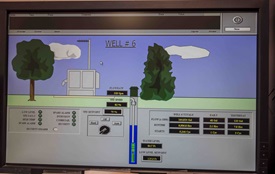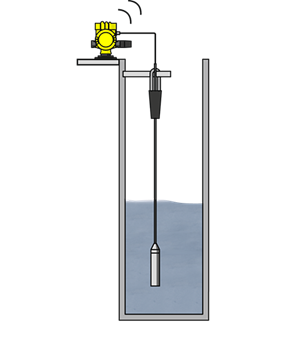When most of us are thirsty for a drink of water, we turn on the faucet, take a swig, and we think no further. Some of us get our water from a private well while others receive our water from the city or municipality where we live. But where does the city or municipality get their water?
A municipality in the Midwest United States relies on deep water wells to pump ground water out of the ground, treat it to make it safe for drinking, and then disperse it to the population it serves. Operators of these wells need to ensure the water being pumped out of the ground is balanced with the amount of groundwater seeping back in. To make sure this happens, operators use submersible hydrostatic pressure transmitters to measure the water level in the well.
Measuring way, way down

Nearly a third of the U.S. population gets its drinking water from public wells. According to the U.S. Geological Survey, or USGS, more than 100 million Americans get their drinking water from public-supply wells scattered across the country. All of these wells range in depth from anywhere between 20 to 1,000 feet, and they’re located outside, so any level measurement instrumentation needs to be able to withstand the elements.
A Midwest municipality had been using hydrostatic pressure for level measurement in a 125 foot well for years. Unfortunately, it had become routine to swap out these sensors on a regular basis. The cables attached to the submersible measurement cell would deteriorate, the sensor itself would rust, or occasionally, lightning would strike and fry the sensor electronics. They needed something that would last longer than a year and be able to withstand the varied and changing weather of a Midwest city.
A pressure sensor that lasts
When operators at the well first talked to VEGA representatives, they purchased and installed the VEGAWELL 52 submersible hydrostatic pressure sensor. The VEGAWELL 52 is specifically designed for continuous level in deep well applications, and it’s been working perfectly at this site since they first installed it three years ago.

Unlike previous sensors, the VEGAWELL 52 comes equipped with a dry ceramic measuring cell, which provides users with a better response time and long-term stability. Plus, they no longer needed a “birdcage” to protect a metal diaphragm.
As for the cable, it’s reinforced for hanging at great distances without stretching or deterioration. Plus, the length and material can be customized to meet any process needs. And if there’s ever a lightning strike, every VEGAWELL 52 comes equipped with overvoltage protection, which prevents any damage to the sensor electronics.
Conclusion
Some measurements may appear simple at first glance, but under the surface – or deep in a well in this instance – certain problems keep popping up. It takes a specialized sensor to make a lasting, accurate level measurement in some of these unique applications.